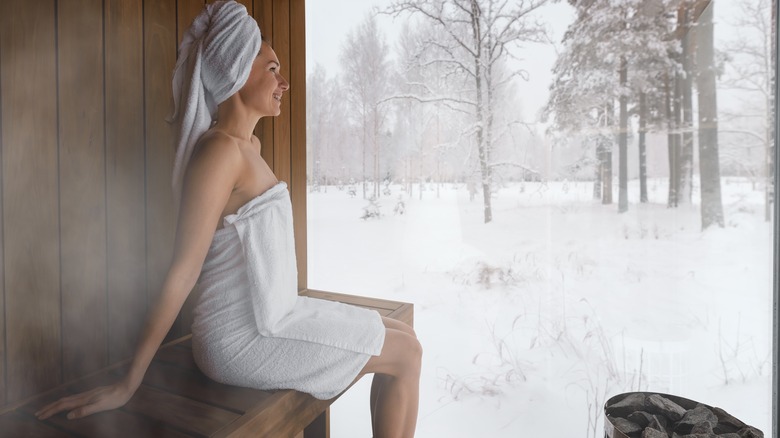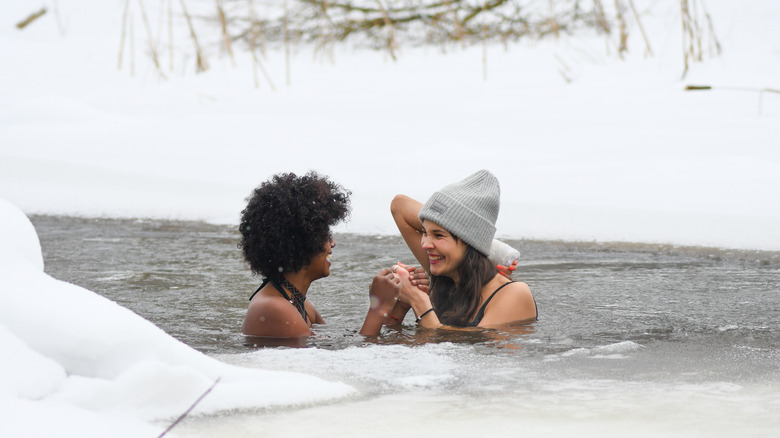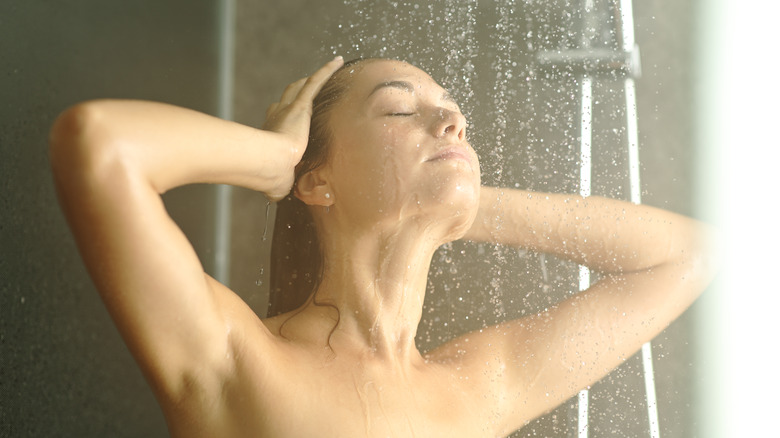Hot And Cold Therapy Could Be The Exercise Recovery Technique You've Been Searching For
Feeling super sore after a good workout can be a nice reminder that you burned some major calories, but not being able to bend over to pick something up or sit down on the floor without cringing is never fun.
Staying motivated after overexerting your body is one thing, but being in pain is another. Experiencing a great deal of pain may mean that you need some help with your workout recovery. A solid exercise recovery routine is just as vital as that extra set at the squat rack or those final three minutes of cardio. In fact, taking care of your body properly after a workout can help you achieve more results over time and it can make your workout benefits last longer.
If you don't have a strict regimen yet or are looking to swap those post-workout supplements for something a little more natural, then hot and cold therapy might just be the way to go.
The science behind hot and cold therapy
Introducing your body to cold and hot temperatures causes a stress reaction in the body. This type of stress is called "hormesis," and in layman's terms is the process of getting your body acquainted and adapted to an extreme environmental factor, little by little, therefore making the body more rugged and indispensable moving forward. Fevers, HIIT workouts, and intermittent fasting all cause a hormesis reaction in the body.
The hormesis reaction is controlled, and therefore not ridden with anxiety, which is often attached to the idea of stress. Hormesis is actually labeled as a good kind of stress that does some really awesome things for your body such as eliminating toxins, repairing cell damage, boosting your immune system, and reducing inflammation. Plus, it can help you live longer! According to Macrotrends, the average life of a Finnish person is 82.48 years, and they've been practicing hot and cold therapy since the dawn of time. In fact, some believe the first sauna was built around the year 2000 B.C. To put that into perspective, Americans are only expected to live 76.1 years, according to the Centers for Disease Control and Prevention (and that number has dropped the past few years).
That should be enough excuse to take a stab at this natural and super form of exercise recovery.
How to make hot and cold therapy a part of your regimen
The concept of hot and cold therapy has been modernized by society to make it more accessible, and a little bit bougie. Cryotherapy is one of the most popular options, offered as a spa treatment, to increase metabolism and keep muscles loose, which is not only an excellent recovery aid but a way to see more results, as well. And, like exercise, it's also been shown to boost your mood and fight depression and anxiety. There are also studies in the works to prove its effectiveness to fight cancer and eczema, which both still have no true cure.
(Literal) hot trends in the workout recovery world right now are pop-up saunas and infrared blankets that you can use at home. But you don't have to shell out hundreds of dollars to try this simple concept. You can easily create a makeshift system at home to recover after your trail run or cycling class. All you need is hot and cold.
For cold therapy, a bathtub is the perfect place for an ice bath. But, if you want to start small, fill a foot bath and dip your feet into icy cold water. To counter the cold, hot therapy can easily be achieved by a steamy hot shower. And if you want to go back and forth between hot and cold in the shower, that's a great way to get comfortable with the healthy shock that hot and cold therapy provides. Plus, cold showers are actually better for your hair!


